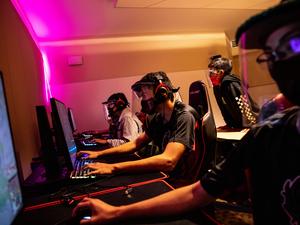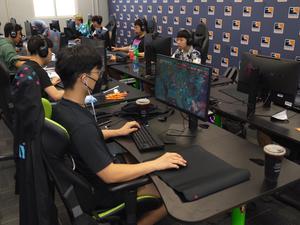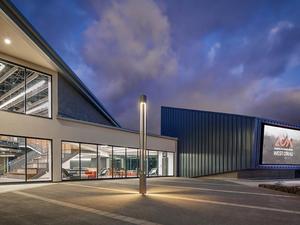For a growing industry, one outwardly perceived as niche and inwardly craving a breakout moment, it was akin to the Big Bang.
Esports in Hawaii exploded onto the world stage in a sudden and unexpected way in early May. The Overwatch League, one of the world’s first and largest professional esports organizations, chose the Islands as a strategic location to hold a series of midseason competitions.
“This was a juggernaut. This was a meteor that landed on us,” said Sky Kauweloa, who leads the University of Hawaii’s two-year-old esports program as the head of its academic task force.
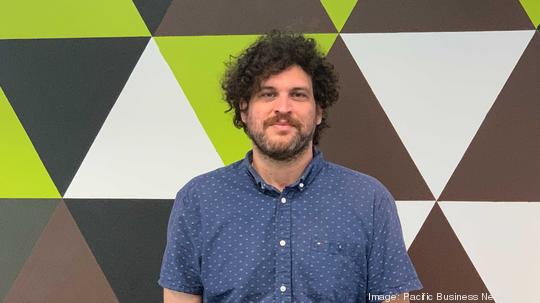
Esports, still a curiosity in many circles, has steadily gained traction into a multibillion-dollar worldwide industry, rivaling or surpassing other forms of mainstream entertainment in viewership.
According to a 2018 Goldman Sachs report, the online audience for esports on YouTube and Twitch was already larger that year than HBO, Netflix and ESPN combined.
Upheld by an entire generation weaned on video game controllers, it has only grown from there, with fans consuming content of their favorite pro teams and players both online and, at least before the coronavirus pandemic, in person.
For the Overwatch League, it turned out that Hawaii — the most isolated place on the planet — was conveniently within striking distance of both Asia and the Mainland U.S. for competition conditions that necessitated remote play. UH, with a reputation as a Pacific middle ground thanks in part to its neighboring East-West Center, was approached as a possible host.
UH’s fledgling program eagerly agreed to play host to four tournaments spaced over the summer. Each involves two North American franchises playing the six-on-six team-based shooter at the Manoa campus, matched up with teams playing from China or South Korea, for a $100,000 first-place prize. The first tournament, the May Melee, won by the upstart Dallas Fuel over the Shanghai Dragons, was roundly hailed as a success.
Overwatch’s bold move became known as “Project Aloha.”
“When you look [back] at the narrative of how esports developed in Hawaii, this will be one of the key moments … this was the thing that triggered the rest of it,” said Tzana Saldania, the communications director at La Pietra - Hawaii School for Girls and esports enthusiast.
There was something charming, if incongruous, about it — one of the world’s gaming giants, developer Blizzard Entertainment, setting up shop in a small, aging building at the center of the Manoa campus.
And thoroughly enjoying it.
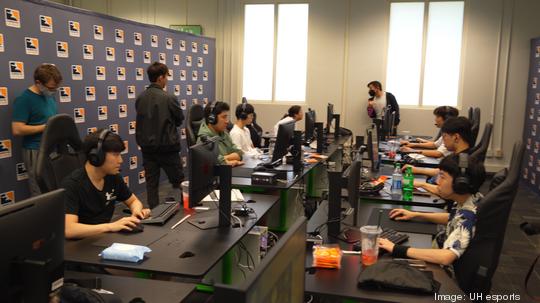
“Global competition was what everyone wanted going into the 2021 season – from our fans to our players as well as the League from a competitive standpoint, and that’s exactly what we got during the May Melee tournament,” Adam Mierzejewski, Overwatch League’s manager of competition operations, told PBN.
The question now, from local esports fans to Hawaii government, is whether the moment can be built upon.
The Beginnings
The pandemic revealed the drawbacks of an economy that relied so heavily on a single industry. Calls to diversify Hawaii’s economy, especially through its technology sector, have intensified.
Making that a reality is another matter, however.
“The megaphone that tourism has makes it difficult for people to see Hawaii as anything but that,” said Ed White, a working data scientist who has UH degrees in computer science and entrepreneurship, specializing in networking and artificial intelligence.
And yet, Hawaii has long enjoyed a strong underground gaming community. Whether it’s the emergence of the Twitch Hawaii streaming community or, pre-pandemic, live watch parties for championships in mainstream games like League of Legends, Overwatch or Rocket League, the scene is evolving.
“People are learning to run tournaments on their own,” said White, who is not directly involved in esports but has a passion for, as he put it, “supporting nerd efforts.”
There are those interested in competing in the games, but others more interested in the periphery of esports, such as those who provide live broadcast commentary — or “shoutcasting” as it is known in gamer parlance.
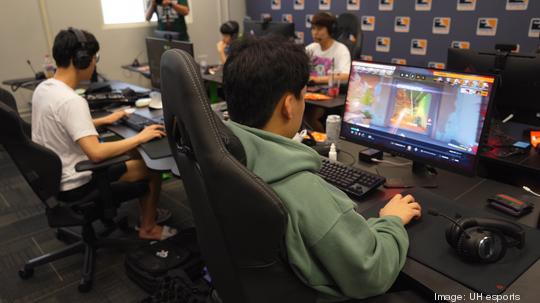
“You’re starting to see signs of Hawaii organically moving toward esports,” White said. “I think that’s the best indicator; there’s nobody from the top down pushing the vision. It’s people from the bottom up making it happen and people at the top being like, ‘Oh, I guess this is inevitable. We should do it.’ So I think that bodes well.”
Both the local collegiate and high school levels have made progress toward not only sanctioned competition for students, but associated roles like broadcasting, production, and marketing.
Hawaii Pacific University took one of the first big steps towards mainstream esports acceptance locally when it unveiled the state’s first competitive esports arena at Aloha Tower Marketplace in 2017, to go with scholarships for competitive players.
Kauweloa, UH’s program head who had extensively studied esports in person at collegiate forerunners like Robert Morris and UC Irvine, credited HPU with providing a big push in the islands.
Not long afterward, Kauweloa said, he spoke to UH President David Lassner, athletic director David Matlin and other parties to shore up UH’s club gaming scene into something more tangible. He knew the enthusiasm was there.
“Most people understand that people play games,” Kauweloa said. “Guys play games, girls play games, athletes play games. Your jocks, your nerds. It’s an underlying experience that’s never been given recognition.”
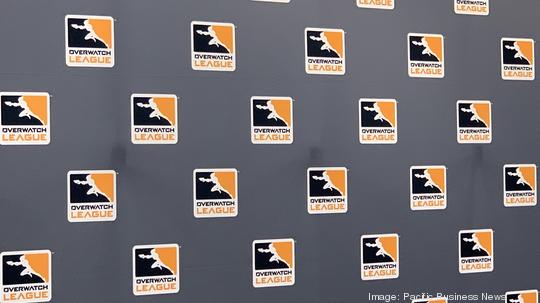
They got some in 2019, when they were made official and began varsity competition. A $60,000 contribution from Chris Lee, the founder and director of UH’s Academy for Creative Media, went a long way. They put together six computers, and some desks and chairs in the iLab, for starters.
There were incremental gains made over the next two years, but when Overwatch League arrived and set up shop for its pros in that very same building, along with the newer Information Technology Center, it was a watershed moment — and not just for UH esports, Kauweloa emphasized.
The Response
When word got out that Blizzard Entertainment was planning to hold events in the Islands, 18-year-old Joey Paci was stunned.
Paci, a freshman in Boise State’s esports program who was born and raised on Maui, was one of the many students spanning the country who contacted UH’s program to offer to volunteer for one of the tournaments.
No luck yet, but that won’t stop him from trying again; persistence and marketing himself independently is how he got a partial scholarship to BSU with his credentials as a top-500 worldwide Overwatch player.
“It’s good not just for the Hawaii esports scene, but the collegiate esports scene as a whole,” said Paci, who added that it coincides with the pandemic serving as a catalyst.
“This past year I would say [collegiate esports] has grown more than I think I can say it’s grown any other time. A lot of programs are transitioning from club-based things to actual university-funded programs, whether it be varsity or to get some fun [out of] it.”
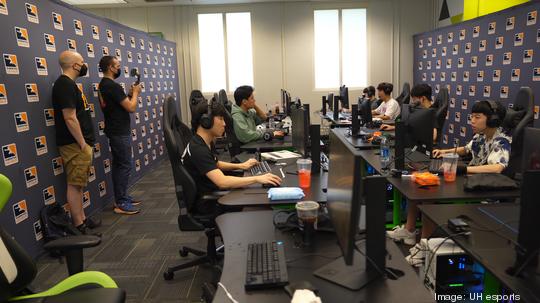
Still, part of the surprise that Overwatch would come to Hawaii was that the Islands are known, especially by the local gaming community, for having a high latency, or subpar connection, because of their distance to mainland game servers.
Overwatch, with help from UH’s IT department, mitigated that problem for the May Melee by re-routing game data straight to the Tokyo game server using a Japan-U.S. undersea broadband cable, instead of one to the Mainland.
It made the latency, or ping, within an acceptable range and using some new technology OWL was able to level it for both the Hawaii and Asia sides for fairness.
Overwatch League’s live stream on YouTube had 50,000-plus concurrent viewers for matches in the double-elimination May Melee tournament as a remote team of shoutcasters called the action. In 2020, OWL owner Activision Blizzard signed a three-year, $160 million with YouTube for the streaming rights, according to The Esports Observer.
Embracing the “Project Aloha” theme, OWL produced videos of its players, who are primarily South Korean, being welcomed in the Islands and transformed its broadcasts’ wait screens between matches into island homages with in-game sandy beaches.
Besides that, observers said it looked like any other OWL event.
“That was one of the takeaways from it, that there were no issues from it, other than it was too normal,” Robert “Ardy” Ross, a shoutcaster who’s been in esports since 2016, said with a laugh. More recently, he’s served as UH’s esports director of production.
The event still managed to reach outside esports’ normal circles.
“People who had no idea about video games were learning how big esports really is, and not only that, how big the program is here at UH,” Ross said.
Putting on events of that caliber is as much about the preparation and setup of the high-spec gaming PCs in designated pods, complete with OWL backdrop logos, as it is about the matches themselves.
That goes for collegiate programs, too.
“There’s so many aspects of it that people on the outside don’t realize,” Paci said, ticking off equipment crews, broadcast staff, a program director, and coaches for individual teams.
“It’s really interesting how many people are involved in making a program like this.”
Some of those in UH’s program, which includes about 50-plus competitive players and 300 more gaming enthusiasts, were able to sign up as interns for Overwatch’s summer events to earn internship credits to help and shadow OWL staff. That is one of the primary benefits for UH, which is not making or spending money on the tournaments; OWL is covering the full expenses.
There will be 30 helpers for the upcoming June Joust, which runs June 7-12.
“The students were also super helpful in making this event successful,” Overwatch League’s Mierzejewski said after the May Melee. “They were so hungry to learn as much as they could and made themselves available to help in any capacity. In addition to helping with competition operations, we had a few League-led discussions with students about their future aspirations and how this weekend could help their growth in esports or even a career outside of gaming.”
Per the Goldman Sachs report the global esports audience was projected to continue to grow by the millions each year — to 276 million by 2022.
The valuation for media rights was expected to continue to climb as a share of revenue streams, with total esports monetization to reach $3 billion by 2022. Prize pools for esports championships rival, and in some instances eclipse, those of traditional sports.
But the pandemic hasn’t helped everyone here. Because of related shutdowns to its esports arena, HPU, which notably offers esports scholarships, has been in a rebuilding phase for its program, its former director, Reed Pasatiempo, told PBN.
“However, I am very [hopeful] and anticipating an even bigger and better response to esports once everything starts getting back to normal,” said Pasatiempo, who was involved with the Sharks’ program from the start and helped get it off the ground with an initial team of 12 in the popular game League of Legends.
OWL’s strict pandemic standards mean that besides staff and interns, no in-person spectators are allowed at the events on UH’s campus.
It’s been a departure for a league that’s used to hosting head-to-head competition at live events in front of thousands of screaming fans. Kauweloa chuckled at the contrast while sitting in the humble, yet functional UH iLab.
“You think of these large venues, Madison Square Garden, these large arenas,” he said. “The iLab was not what I imagined it [would be like for the first event here]. But … we were up for the challenge.”
For him, it was important that one of the franchises hosted by UH, the Dallas Fuel, won the inaugural tournament over a counterpart from Asia, for the success that represented going forward.
The Future
Those inside the local esports space agree that a significant infrastructure investment is required if esports is to realize its potential as a diversifier of Hawaii’s economy.
There are at least two areas of concern: the lack of a spectator-friendly venue, and limitations with UH’s connection speeds to the global network because of aging undersea broadband cables.
The latter has been a mission for Burt Lum, Hawaii Broadband Initiative strategy officer, for several years.
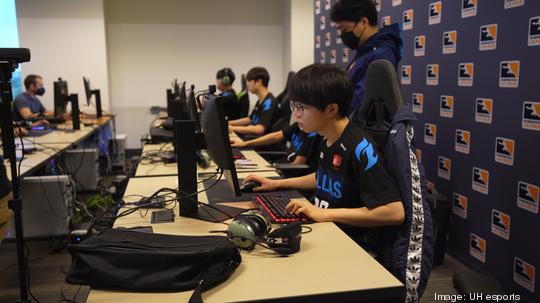
While private companies build out the fiber cables that run for miles and miles of ocean floor, he sees the need for the state to construct modern sea-to-land cable landings — one each on Kauai, Oahu, Maui and Hawaii Island — to incentivize companies like Google and Facebook to attach new cables to Hawaii from around the Pacific. Such a project would cost $40-50 million, he said, but he’s hopeful federal money can be attained for some of that.
It will be easy to be left behind if an investment is not made, Lum said.
“If we are just viewed as a user of the internet, then a lot of the infrastructure builds might be more on the level of, ‘well, as long as they’ve got Netflix, I think they’re happy,’” Lum said. “I argue that Hawaii is more than a bunch of just Netflix viewers.”
Overwatch League’s appearance for these tournaments are case in point that a large company is willing to put on a major event here if the conditions are right, said Ross, the shoutcaster.
“In Hawaii, all we need is actual tournament space and actual venues and places where this scene can take off, and there’s nothing stopping an organization from popping up here and taking advantage of the fact they can take part in tournaments in Asia, on the Mainland, and local tournaments here,” Ross said.
There have been whispers that an esports arena might be among the long-term projects built at the New Aloha Stadium Entertainment District in Halawa.
That would be a long way off, state Sen. Glenn Wakai told PBN, with the new stadium the first priority and expected in 2024 at the earliest. Ensuing entertainment projects like a possible esports arena would be “years down the road” and would require community support, funding, and a design to monetize it beyond a handful of events.
“We haven’t quite figured out how it should shape up, but it is something we should be contemplating, building a proper venue to take advantage of the excitement and growth in the future,” said Wakai, who added that he paid attention to OWL’s appearance and called it a “game-changing event.”
As improbable as a modern esports arena seating several thousand might seem, a major gaming company’s appearance here for an international tournament was not long ago considered just as unlikely.
For the UH esports program, Kauweloa’s immediate task is persuading higher-ups to allocate regular funding, in part so scholarships can be handed out to competitive players, but also so he can build out roles for others interested in a peripheral jobs in the industry. As in traditional sports, sponsorship opportunities could arise from some of the exposure the program has received and potentially negate some of the costs.
Saldania lamented that, just a handful of years ago, opportunities for such roles in her dream field during and immediately after her education would’ve required her to move to the Mainland.
“I don’t think it started to be taken seriously as even an option until the last five to seven years,” she said. “I wish I was in school now, because if you’re a dweeb, and you like technology, now’s your time.
“You can play Mario Kart and do work at the same time.”
